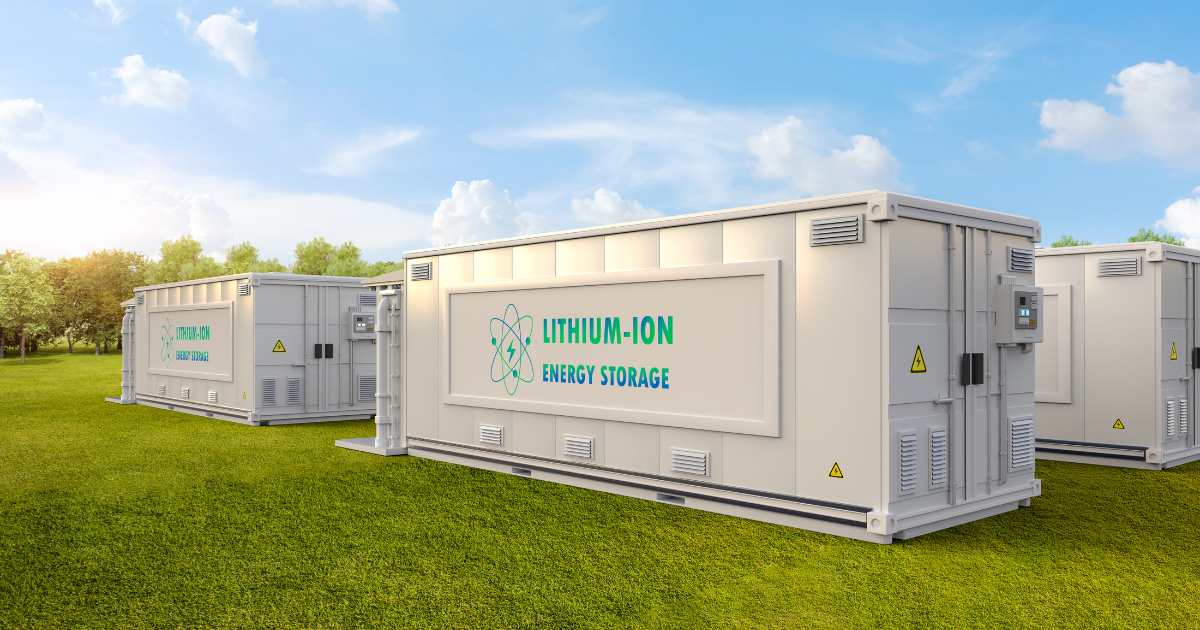The world’s energy landscape is undergoing a transformative shift towards renewable energy sources, such as solar and wind power. These intermittent energy sources pose a unique challenge: their output is variable and dependent on weather conditions. To effectively integrate these renewables into the grid, energy storage solutions are essential to bridge the gap between supply and demand. Lithium-ion batteries, with their high energy density, long lifespan, and rapid charge-discharge capabilities, have emerged as a frontrunner in grid storage applications.
Unveiling the Potential of Lithium-Ion Batteries for Grid Storage
Lithium-ion batteries offer a multitude of benefits for grid storage:
Enhanced Grid Stability: Lithium-ion batteries can store excess energy generated during periods of high renewable energy production and release it during periods of high demand, smoothing out fluctuations and stabilizing the grid.
Improved Grid Reliability: By providing backup power during outages or grid disruptions, lithium-ion batteries enhance the reliability of the electricity system, reducing the risk of blackouts and ensuring a continuous supply of power to consumers.
Deferred Peak Demand: Lithium-ion batteries can store energy during off-peak periods and release it during peak demand periods, reducing the need for expensive peak power plants and lowering overall electricity costs.
Facilitated Renewable Energy Integration: Lithium-ion batteries enable large-scale integration of renewable energy sources by providing a reliable and flexible storage solution, allowing for a more sustainable and resilient energy grid.
Environmental Benefits: Lithium-ion batteries, compared to traditional grid storage options like pumped hydro storage, offer a smaller carbon footprint and reduced environmental impact.
Applications of Lithium-Ion Batteries in Grid Storage
The use of lithium-ion batteries in grid storage encompasses a wide range of applications:
Utility-scale energy storage: Large-scale lithium-ion battery systems are being deployed by utilities to store energy from solar and wind farms, providing grid stability and facilitating renewable energy integration.
Microgrids and community energy storage: Lithium-ion batteries are increasingly being used in microgrids and community energy storage projects, enabling communities to generate, store, and share their own energy, enhancing energy independence and resilience.
Behind-the-meter storage: Homeowners and businesses are adopting lithium-ion battery systems for behind-the-meter storage, storing solar energy for self-consumption, reducing reliance on the grid, and lowering electricity bills.
Frequency regulation and ancillary services: Lithium-ion batteries can provide frequency regulation and other ancillary services to the grid, helping to maintain grid stability and reliability.
Peak shaving and demand response: Lithium-ion batteries can be used to shave peak demand by temporarily storing energy during peak periods and releasing it later, reducing strain on the grid and potentially lowering electricity costs.
Future Outlook for Lithium-Ion Battery Grid Storage
The future of lithium-ion battery grid storage is bright, driven by advancements in battery technology, declining costs, and increasing demand for grid flexibility. As battery technology continues to improve, with higher energy density, longer cycle life, and lower costs, lithium-ion batteries will become even more attractive for grid storage applications.
In addition, governments worldwide are recognizing the importance of grid storage and are implementing policies and incentives to support the deployment of lithium-ion battery systems. These policies are expected to accelerate the growth of the grid storage market and further solidify the position of lithium-ion batteries as the leading technology for grid storage solutions.
Conclusion: Empowering a Sustainable Energy Future
Lithium-ion batteries are playing a pivotal role in the transformation of the energy landscape, providing a sustainable and scalable solution for grid storage. By harnessing the power of these innovative batteries, we can effectively integrate renewable energy sources, enhance grid stability and reliability, and pave the way for a cleaner and more resilient energy future. As we move forward, the continued development and deployment of lithium-ion battery grid storage technologies will be critical in achieving our global energy sustainability goals.




